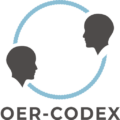Virtual Collaborative Learning (VCL) is a learner-centered approach in higher education, rooted in problem-based learning. Since 2001, it has been developed at TU Dresden, implemented in regularly Bachelor and Master courses, and constantly refined on the basis of empirical, evidence-based research. Shifting the focus from content-centered teaching (traditional eLearning) to student-centered autonomous, active learning processes, the VCL Framework aims primarily at the development of 21st century skills. It provides a structured, methodical approach for the development, implementation, and evaluation of COIL projects (Collaborative Online International Learning). COIL projects are cross-cultural learning projects that are carried out virtually together with one or more international partner universities (Guth & Rubin, 2015; The SUNY Center for Collaborative Online International Learning, n.d.). COIL as a teaching paradigm was originally created in 2006 by the COIL Center at State University New York (SUNY), one of the leading international organizations focusing on the burgeoning field of globally networked learning (Guth & Rubin, 2015). Principally, COIL projects can be implemented both as elements of
- formal learning (containing assessment of activities and results and delivering certificates with credit points and grades) or
- non-formal or even informal learning in dedicated learning communities or open communities (learning on the fly, unintentional learning; for the differentiation see the OECD definition).
VCL fosters active, self-organized learning in groups, focusing on formal learning settings, delivering ECTS credit points and grades as elements of Bachelor or Master study programs. It is centered around practical case studies, providing adaptability through both synchronous and asynchronous phases. Learner groups collaborate using information and communication technology, guided by four key design aspects, which can be seen as mutually interlocking gear wheels:
- realistic case studies,
- professionalized pedagogical support,
- a well-suited technical platform, enabling online collaboration in a professional software environment, and
- the utilization of learning analytics and information visualization to make the skills development transparent and to improve the quality of e-tutors’ interventions (observation, guidance, feedback and assessment).
Furthermore, COIL projects organized on the principles of the VCL framework support Virtual Mobility and Virtual Exchange and enable students to achieve ECTS credit points and grades that are recognized at the students’ respective home institutions (Altmann & Clauss, 2020; Clauss & Fischer, 2020).
One of the primary goals of VCL is to implement collaborative learning in a virtual environment. Therefore, participants of the VCL work in groups of 4-6 students to master complex tasks, embedded in complex, weakly structured case scenarios, enabling open solutions. Team members fulfill different roles (such as project manager, project reporter, or project researcher) that they must maintain throughout the virtual phase (Jödicke et al., 2014). Such specific roles demand students to rely on their teammates and their complementary activities and allow them to expand their knowledge beyond the skills, needed in the theoretical context of the studies and exchange experiences without affecting their financial or geographical constraints (Clauss & Fischer, 2020). Also, to ensure equal opportunities and multi-perspective results the composition of the groups is organized as diverse as possible, therefore students of different ages, studies, home universities and countries get together to work on a common task (Altmann & Clauss, 2020; Clauss et al. 2021). Throughout the virtual phase students are supported by e-tutors, who provide teams with formative feedback and monitor the group work (Clauss et al. 2021).

The advantages and potential of VCL encompass the development of improved problem-solving abilities, heightened student involvement, and the ability to prepare learners for real-world challenges (Altmann et al., 2023). Moreover, since the VCL framework aims to promote student communication and collaboration, this model becomes largely content-independent and can thus be applied to a wide range of educational topics in a university setting (Clauss et al. 2021; Jödicke et al., 2014).
If you want to develop understanding about VCL, please, complete the task.
Question for self-reflection
How VCL might enrich your teaching practice?
| Read. Before diving into more detailed information about VCL, please read Background information about Collaborative Online International Learning (p.p. 4-5 ) by SUNY COIL Centre. | |
| Share and discuss. After reading the document, go to the discussion forum and share your experience and understanding about COIL. Why do you need to apply COIL? |
